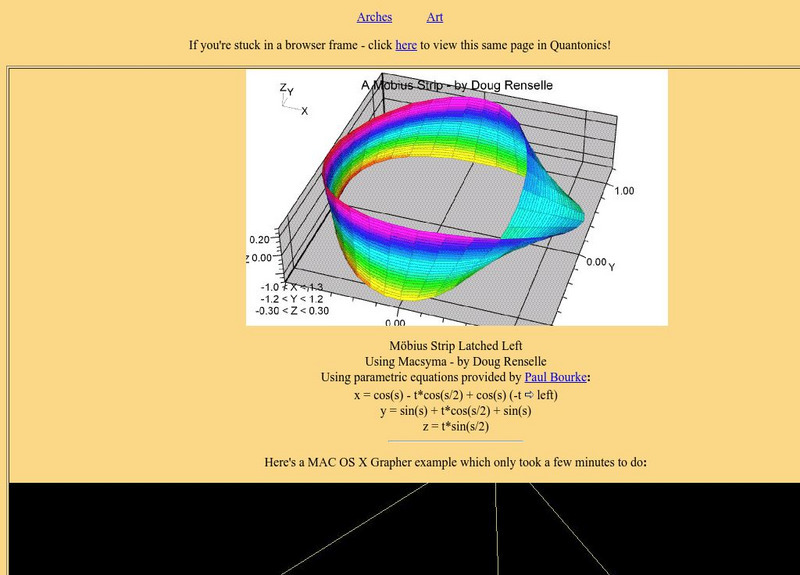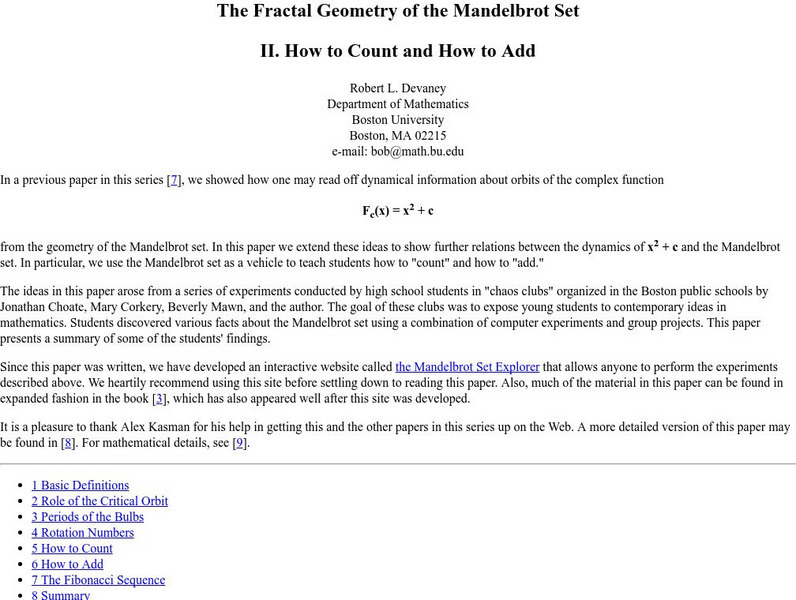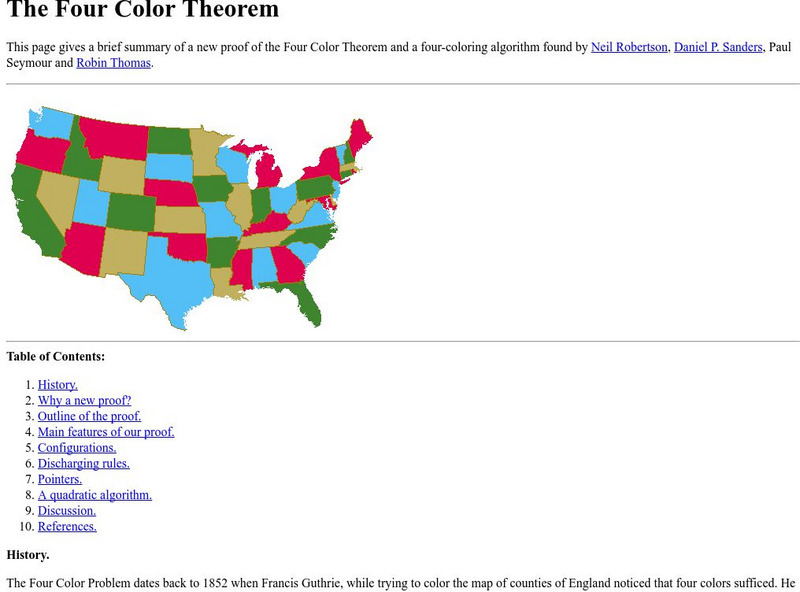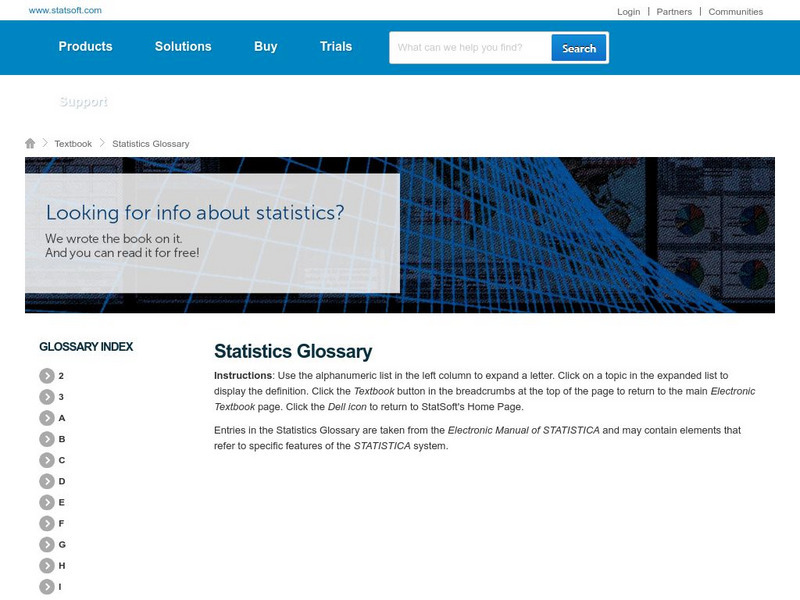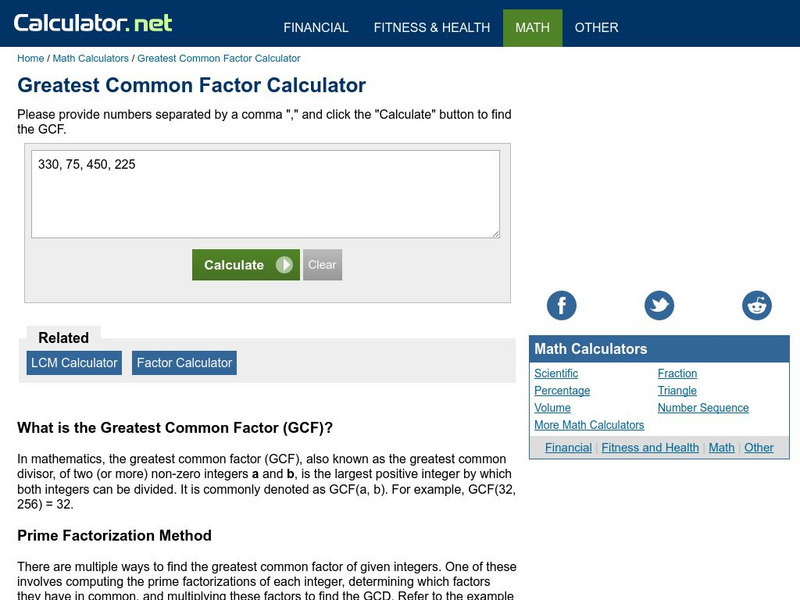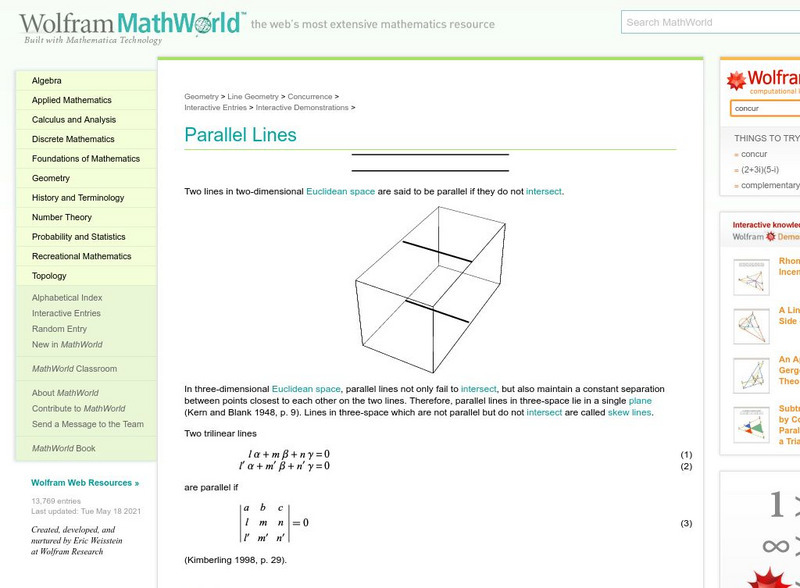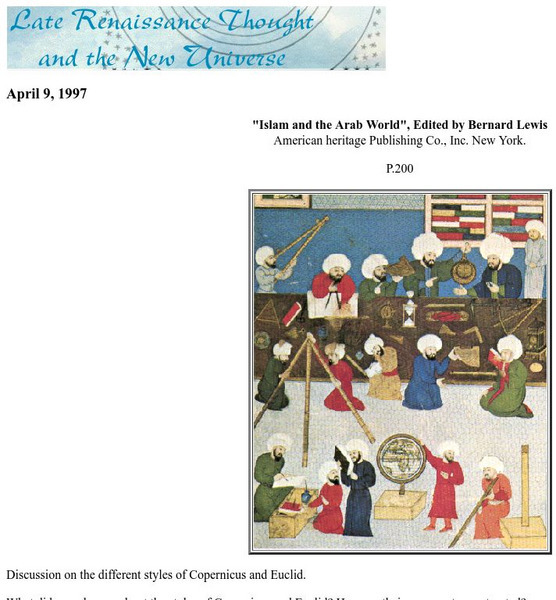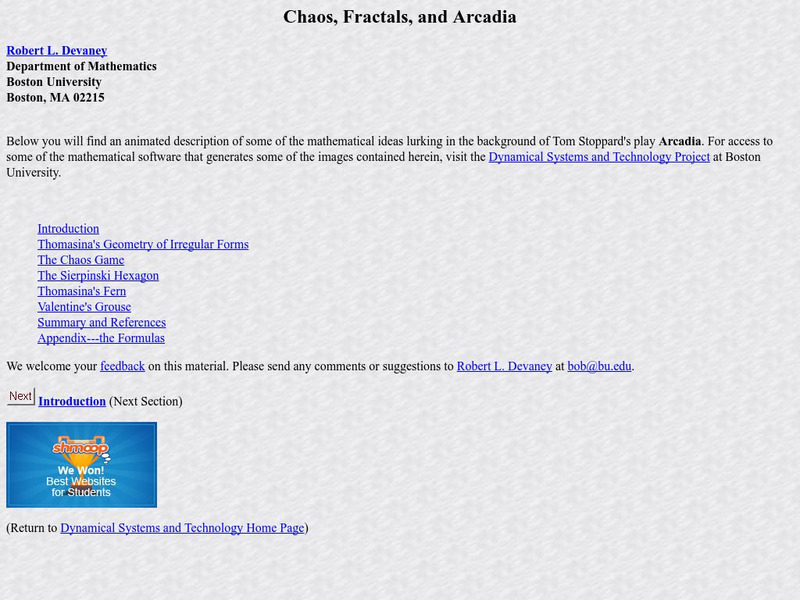Hi, what do you want to do?
Math Open Reference
Math Open Reference: Biography of Euclid
Biography of Euclid, a Greek Mathematician, also known as the 'Father of Geometry'.
Math Open Reference
Math Open Reference: Constructions
Learn about drawing shapes using only a compass and straight edge or ruler with out measuring any lengths or angles.
Alabama Learning Exchange
Alex: Platonic Solids Ornaments
This is a hands-on activity that introduces students to the five Platonic solids. Students will discover the special relationship between faces, vertices, and edges. Students will research the Platonic solids and then construct and...
Boston University
Fractal Geometry of the Mandelbrot Set Ii
This web site addresses counting and adding in fractal operations, as well as the role of the Fibonacci sequence in fractal geometry.
Wikimedia
Wikipedia: Hyperbolic Geometry
This encyclopedia entry from Wikipedia offers a discussion on hyperbolic geometry. The site explains how the hyperbolic geometry plane is represented in two dimensions and how lines in the plane must be drawn. Other types of models for...
Jim Loy
Jimloy.com: Saccheri
This site explains the Saccheri quadrilateral and the importance of his work in geometry.
Other
Georgia Tech: The Four Color Theorem
An explanation and proof of the Four Color Map Theorem. Includes illustrative images and a plethora of information.
Other
Stat Soft: Statistics Glossary
Dozens of statistical terms are defined and illustrated in this glossary.
World History Encyclopedia
World History Encyclopedia: Greek Mathematics
Discusses the major cultural influences on the development of mathematics in ancient Greece, and how the Greeks went on to surpass those cultures. The work of the Pythagoreans and of Euclid are described, along with some famous...
National Council of Teachers of Mathematics
The Math Forum: Ask Dr. Math: Hyperbolic Geometry
Dr. Math, responds to a question fro a nineth grade stduent who wants to understand hyperbolic geometry. The Dr. uses descriptive analogies in attempts to unravel why triangles in hyperbolic geometry have less than 180 degrees in them.
Oswego City School District
Regents Exam Prep Center: Theorems and Postulates for Geometry
Here is a partial list of theorems, postulates, and properties.
Other
Greatest Common Factor Calculator
Free online calculator provides help with finding the greatest common factor.
University of St. Andrews (UK)
University of St. Andrews: St. Andrews: History of the Four Color Theorem
The University of St. Andrews offers a brief history of the first math problem to be solved with computers.
Louisiana Department of Education
Louisiana Doe: Louisiana Believes: Eureka Math Parent Guide: The Concept of Congruence
A guide to support parents as they work with their students in the concept of congruence.
University of California
University of California: Geometry in Action
This page collects various areas in which ideas from discrete and computational geometry (meaning mainly low-dimensional Euclidean geometry) meet some real-world applications.
Wolfram Research
Wolfram Math World: Parallel Lines
A definition for parallel lines in two-dimensional and three-dimensional Euclidean space. The site also gives reference to skew lines and explains the difference between skew and parallel lines in three-dimensional space.
Dartmouth College
Dartmouth College: The Different Styles of Euclid and Copernicus
A history of the differences between Euclid's and Copernicus's methods of proving geometric ideas.
University of Canterbury
Canterbury: The Konigsberg Bridge Problem
An introduction to the Konigsberg Bridge problem and its relationship to network theory.
Wolfram Research
Wolfram Math World: Spherical Geometry
Site provides a brief explanation of the discipline of Spherical Geometry along with many links to spherical geometry topics.
Boston University
Boston University: Chaos, Fractals and Arcadia
This is an interesting site for information on chaos and fractals. Includes links to interactive activities to learn more.
Boston University
Bu: Fractal Geometry of the Mandelbrot Set
This site progresses in iterations through Mandelbrot and Julia sets to explain fractals and the mathematics behind them.
Wolfram Research
Wolfram Math World: Euclid's Algorithm
This site from Mathworld.com provides a very detailed description of Euclid's algorithm of common divisors and a method of finding the greatest.
Shodor Education Foundation
Shodor Interactivate: Lesson: Fractals
This site provides some links to activities and lesson plans dealing with fractals and chaos.
Other popular searches
- Euclidean Geometry
- Euclidean Geometry Proofs
- Non Euclidean Geometry
- Euclidean Algorithm
- Indirect Euclidean Proofs
- Euclidean Proofs
- Non Euclidean
- Parallelogram Euclidean
- Non Euclidean Geometry
- Euclidean Construction
- Euclidean Theorems





